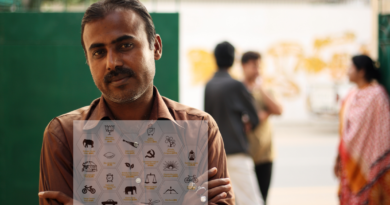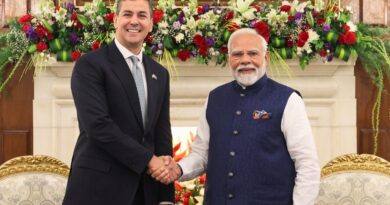Focus India Elections 2024: Social Media Is The Kingmaker
Congress Surges Ahead on Social Media, Outshines BJP in Lok Sabha Campaign. 613 Million YouTube Views and Robust Instagram Growth Highlight Congress’s Digital Dominance on Key Issues
In the Indian Lok Sabha elections, social media has emerged as a crucial battleground for political parties to connect with voters. According to Supriya Shrinate, Congress garnered 613 million views on YouTube during the campaign, a stark contrast to BJP’s 150 million views, showcasing a fourfold difference. This substantial difference indicates a stronger connection between the Congress’s message and the public, with issues like inflation and unemployment resonating more with the audience.
Shrinate underlined the party’s comprehension of popular opinion, saying, “We have data that shows what people wanted to listen to and who they wanted to listen to.” This declaration highlights the party’s emphasis on tying its message to the interests of the voters, an approach that appears to have been successful in the digital arena.
The information gathered between March 16 and May 30 paints a vivid picture of Congress’s hegemony on social media. BJP’s average of 26,945 likes on Instagram was greatly outperformed by Congress’s average of 122,000 likes. In a similar vein, Congress had an average of 2,500–3,000 likes on Twitter, whereas BJP’s average was closer to 260–300 likes. Facebook data also showed that Congress was ahead of BJP, with an average of 1,200–1,500 likes as opposed to 150–250 for BJP. Facebook’s reach increased from 50 million in March to 105 million in May, suggesting that people are becoming more interested in the content published by Congress.
Congress’s Twitter impressions increased from 117 million in March to 128 million in May, demonstrating the party’s steady rise in social media presence. Significant growth in YouTube views was also observed, rising from 80 million in March to 233 million in May. This indicates a strong upward trend in audience engagement. Congress’s following on Instagram increased from 78 million in March to 154 million in May, demonstrating a steady rise in viewer engagement and a robust online presence. These numbers point to a dramatic change in the social media landscape, with Congress successfully using digital channels to spread its message and interact with citizens.
Twitter Growth
On X (formerly Twitter), all parties have seen steady growth. From March 1 to May 31, the BJP added 3.9 lakh followers, bringing its total to 2.1 crore. Congress followed closely, adding 3.1 lakh followers, increasing its total to 1.05 crore. Meanwhile, AAP, although smaller in comparison, added over 15,000 followers, bringing its total to 65 lakh. This consistent growth across all parties highlights the importance of X as a platform for political engagement and communication.
YouTube: The New TV for Parties
YouTube has emerged as a crucial platform for political parties, serving as a direct channel to broadcast messages and engage with voters. Interestingly, the data shows that higher subscriber bases are correlated with slower growth in new user additions and video views.
During the analyzed period, AAP led the pack by adding 15 lakh new subscribers and garnering nearly 90 crore video views. This surge brought AAP’s total subscriber count to 68 lakh. Congress followed, adding over 10 lakh new subscribers and achieving 65.6 crore video views, raising its subscriber base to 50 lakh. The BJP, despite having the highest overall presence, added 3.6 lakh new subscribers and garnered 28 crore views, bringing its total subscriber count to 59 lakh. This pattern suggests that AAP’s content strategy might be more effective in engaging and attracting new viewers compared to its counterparts.
Instagram: The Gen Z Hub
Instagram has become the go-to platform for political parties aiming to connect with first-time voters and younger demographics. Between March and May, Congress emerged as the dominant force on Instagram, adding 26 lakh new followers, more than double the combined total of BJP and AAP. This growth spurt increased Congress’s follower base to 59 lakh.
AAP came in second, adding 7 lakh new followers, bringing its total to 17 lakh. BJP, although the most followed Indian political party on Instagram, gained 5.4 lakh new followers, raising its total to 79 lakh. This rapid growth for Congress on Instagram underscores its appeal to younger voters and its effective use of the platform for engagement.
It’s worth noting that, according to an earlier India Today analysis, Instagram received the largest share of online ad spending on Meta platforms by both BJP and Congress between December 2023 and March 2024. This investment appears to be paying off, particularly for Congress.
Leaders’ Online Presence
Prime Minister Narendra Modi remains the most followed Indian leader across all social media platforms, significantly outpacing both Rahul Gandhi and Arvind Kejriwal. However, in the past three months, Rahul Gandhi has outpaced Modi in gaining new followers on Instagram and YouTube, although Modi maintains his lead on X.
On Instagram, Rahul Gandhi gained 26 lakh new followers, Modi added 20 lakh, and Arvind Kejriwal added 5.3 lakh. Currently, Modi is followed by 8.9 crore Instagram users, Gandhi by 86 lakh, and Kejriwal by 24 lakh.
Similarly, on YouTube, Gandhi’s channel attracted 26 lakh new subscribers, compared to Modi’s 16 lakh. Modi’s YouTube channel has a substantial lead with 2.3 crore subscribers, while Gandhi’s has 65 lakh.
On X, Modi continued to expand his dominance, adding 23 lakh new followers, compared to Gandhi’s 6.8 lakh and Kejriwal’s 1.1 lakh. Modi is followed by 9.8 crore users on X, while Gandhi has 2.5 crore followers.
These numbers reflect not only the reach and influence of these leaders but also the growing importance of social media as a battleground for political engagement and voter connection. As social media continues to evolve, its role in shaping political landscapes and election outcomes in India will only become more significant.




